Good morning, good morning! Anyone who has ever been to St. John in the summer season (or many other tropical paradises all over the world), has most likely noticed the amazing Flamboyant trees. These magical trees add a splash of bright red, orange and/or yellow to our beautiful green mountainsides and provide much needed shade from the summer sun. There’s probably some basic information you know about these trees, because how could you not get curious the moment you see them! What I’m hoping to highlight today, are a few fun facts about this tree that you may not know!
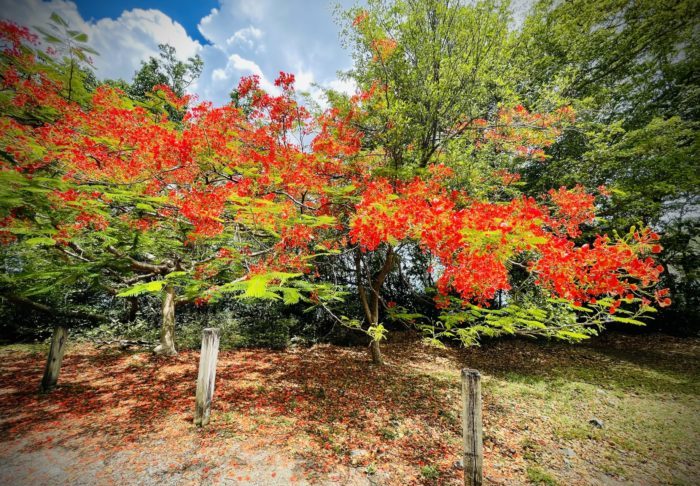
Lets start with the basics! The Flamboyant tree is a tree of many names, all of which have something to do with the bright color of the flowers. These names include The Flame tree, Flame of the Forest, Royal Poinciana to name a few, and it’s scientific name is Delonix regia. If you wanna get real nerdy with me, check this out… the scientific name, Delonix, is Greek and means claw-like…which actually makes a whole lotta sense when you look closely at the shape of the flower.
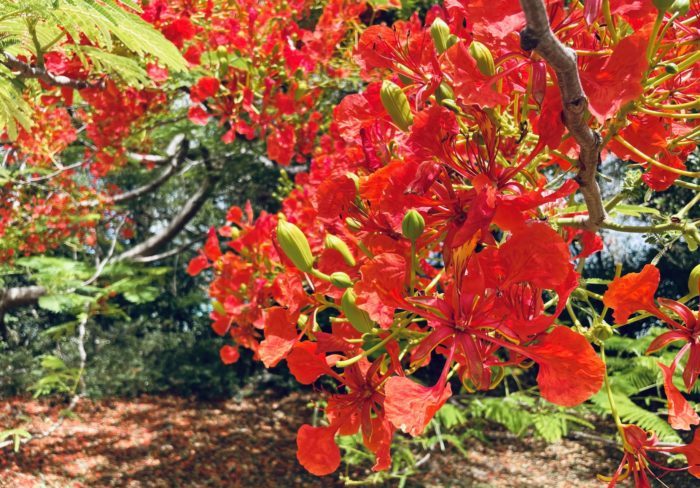
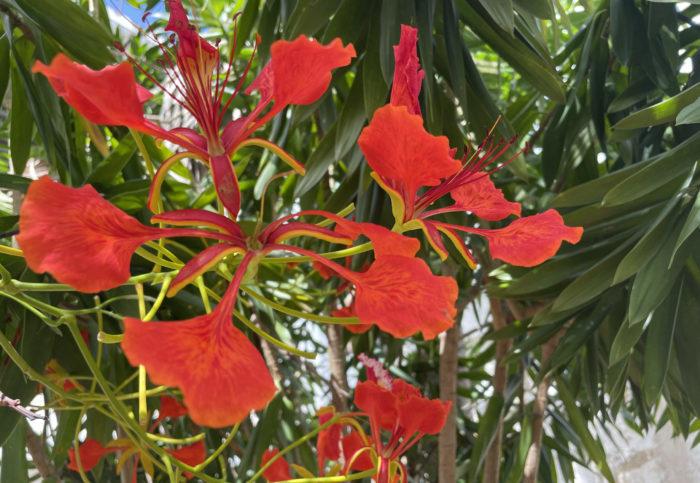
This tree is native to Madagascar, an island off the coast of Africa, where it sadly is now endangered due to deforestation practices. We are blessed to have an abundance of these trees on our island of St. John.
Eleanor Gibney, a local expert on USVI plants and history, believes the seeds first arrived here in in the 1800s, according to historical Caribbean plant lists, and by the 1880’s they were common in West Indian gardens.
For the abundance we still see today, we can be thank Caribbean homeowners who wanted to plant these beauties on their properties to provide more shade and vivid contrast, but also to a Flamboyant enthusiast named Ariel Melchior, Sr.
Ariel knew the importance of having this tree throughout the US Virgin Islands, so much so that he hired an airplane captain to fly low over St. Thomas and scatter the seeds over the land. Voila! The rest is our present history!

Besides being devilishly good looking and providing shade, the Flamboyant tree has several other possible uses. Belonging to the bean family, this tree has these long slender pods that can house up to 50 seeds inside them! Once they are dark and dry, the pods can be used as a precussion instrument that has one of the coolest names! A Shack-shack! I think I actually paid $5 for one of these in Cruz Bay one fun night at Beach Bar one of my first trips to St. John. This was before I realized how prevalent the pods would be in the summer! Ha!
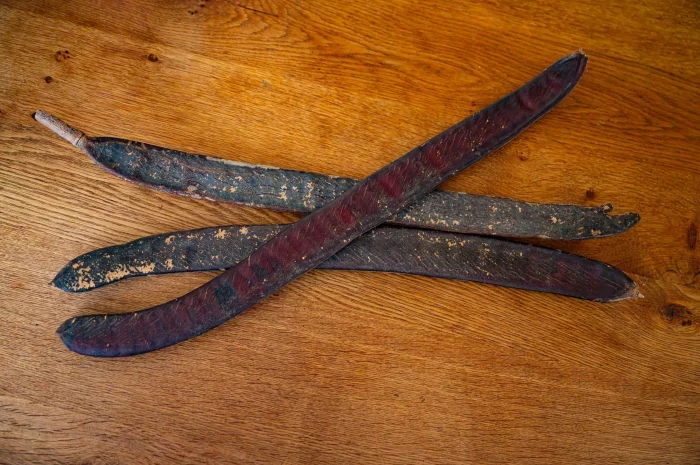

In Puerto Rico, the Flamboyant tree is known to be a symbol of pride, hope and rest. Parts of this tree can be harvested as medicine, food, timber, fuel and beads. I found this article that gives a pretty extensive list of some of the awesome potential health benefits of this magical fiery tree! Here is a list of ones that really stood out to me (click on the link for the full list!):
- To aid in abdominal pain during menstration by grinding up dried flowers into a powder. You take 2-4 grams of the powder and mix it with honey. There isn’t much information on this that I found, when I was trying to see if you then eat the Flame honey or rub it on your body, but I did discover that you can eat the flowers! So both maybe? Here’s a fun recipe for a Flamboyant flower salad!

- To aid in arthritis pain you can grind the leaves of the yellow colored Flamboyant.
- To aid in contact with scorpion venom you can also use the powder from grinding a yellow colored Flamboyant to apply at the wound.

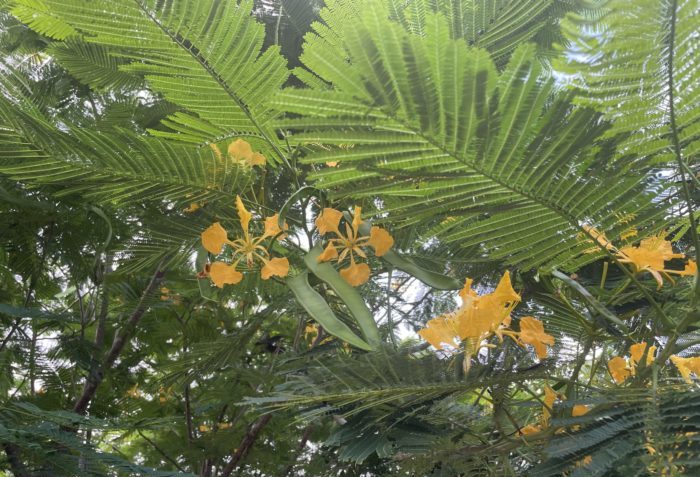
Now, I haven’t tried any of these suggestions yet, but I am starting to get excited about the idea of making a little salad! I hear the petals taste sour and spicy!
Otherwise, some other potential health benefits include anti-bacterial, anti-inflamatory, anti-diabetic, and anti-malarial properties among others. Knowing this, is making me want to look into making a Flamboyant-salve! So maybe I’ll reach out to my friend Gina who makes salves, candles and soaps on island with her company Island Fire and see about it!
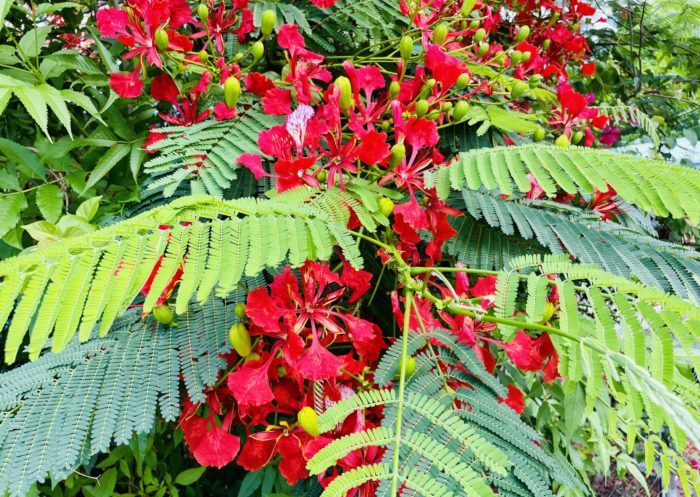
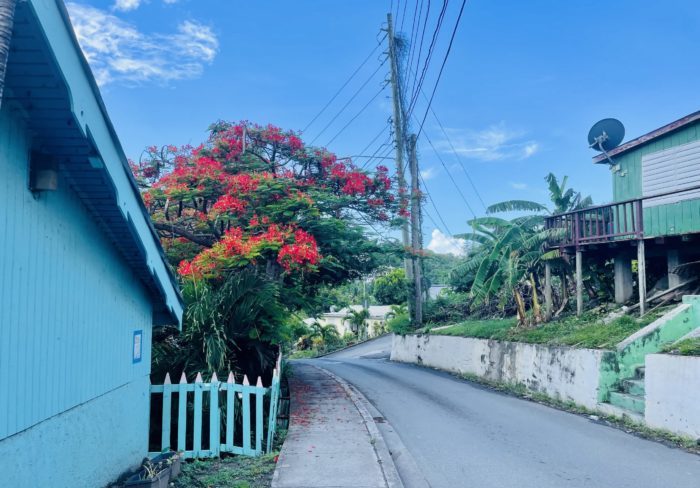
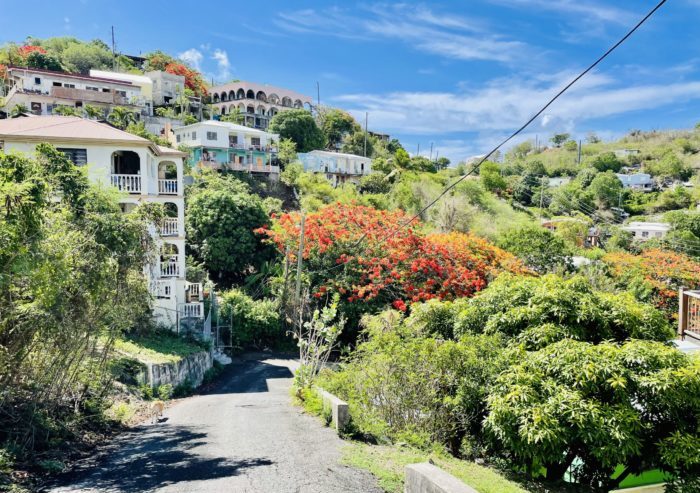

With a lifespan on average up to 60 years (sometimes more, sometimes less), these trees provide a lot for the people around them. Next time you pass by a tree, see a photo of one, or book your next flight down here to visit in the June-September months to spot one, remember the story of how it got here and how it can be appreciated! Thank you for being curious with me! If you want to read a little more about St. John’s Flamboyant tree story, click here and/or here for some previous articles Hillary wrote! Have a beautiful Thursday, wherever you are!



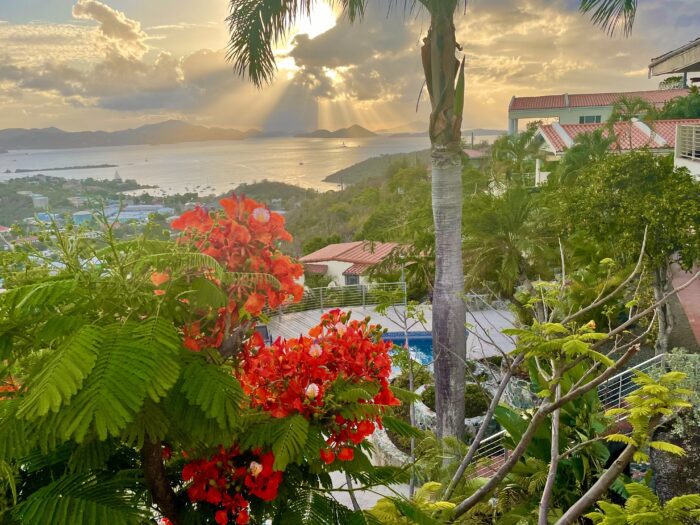
Nice Blundstones! Great blog. Never knew about much about the flamboyant trees. Now I do. Thanks
Great article, thanks!